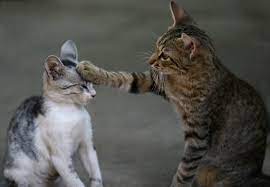
Last post, we talked about writing effective dialogue in general. Now, let’s focus on writing dialogue within a scene.
Writing Tip for Today: Here are some tips for creating effective conversations within a scene:
Resist Speechifying
Dialogue in fiction is more than she said and then he said. In fact, if your scene contains sufficient conflict and tension, your characters are probably not standing by politely while the other character drones on. Writing dialogue in a ping-pong manner leads to Speechifying.
Speechifying is dialogue that continues long enough that the other character (and readers) gets the feeling of a speech. You can usually spot this type of dialogue by the big chunk it takes up on the page. Remember, readers like white space—dense text makes most of us think of a dull textbook or encyclopedia.
If your characters are three-dimensional, they’ll most likely be speaking in short bursts, with interrupting or pauses of inner thought or action. The reason? As your characters converse, readers will begin to imagine the whole scene less and less. Without reminders of who’s in the scene and where it’s unfolding, readers begin to see only Talking Heads—characters who are speaking in a vacuum.
Rule of Three
One way to learn to weave together these different scenic elements is to go by The Rule of Three. This is just a guideline! But whenever you write three lines of dialogue for any character, take a look at the scene as a whole. Let the other character interject or show us the setting or action. Give us emotions through POV character thoughts or character action and gesture.
The Rule of Three can also help you prevent Speechifying and Talking Heads. If you compare a chunky paragraph where one character goes on and on to a paragraph where interruptions, actions, descriptions and emotions are interspersed, you’ll discover a more pleasing white space page for your readers.
If you’re still unsure about The Rule of Three, practice listening to conversations in public places, watch movie dialogue or read an author you admire. You’ll probably discover how conversations (especially heated ones) rarely unfold with one character pontificating while the other is silent. As you practice writing this holistic approach to scenic dialogue, you can stop counting lines of dialogue and simply let a scene unfold naturally.
Who’s Speaking?
As you weave together dialogue with the other parts of the scene, you may see that some characters are getting left out. If there are more than two in the scene, it’s necessary to remind readers now and then. This is Camera Refocusing, where your camera zooms out from a closeup to show the rest of the scene.

To blend dialogue, imagine braiding hair.
A scene’s basic elements (the setting, other characters and sensory detail) fade quickly as the dialogue takes over. Always be sure readers can remember the scene as you set it. And while you’re at it, be careful with pronouns. If two characters of the same gender are in dialogue, she or he or even they can become confusing. I’m not a big fan of constantly naming characters but do be sure to keep confusion to a minimum.
When you write dialogue, imagine braiding hair. One strand is your POV character. One is the second character who is the object or participant. The third strand is either other characters or the setting as a whole. Be sure that these elements stay balanced to give readers the most cinematic experience possible.




